Resources
Resources
Fancy a freebie?
I often get asked the same questions a lot, but this is because they are very real and common concerns with pet parents.
How do I know if my dog is in pain?
What are the best joint supplements?
This free resource give you an insight into some of my go to advice when dealing with canine joint pain. Also it can be used to guide those who want to pre-emptively protect the health and longevity of their dogs joints.
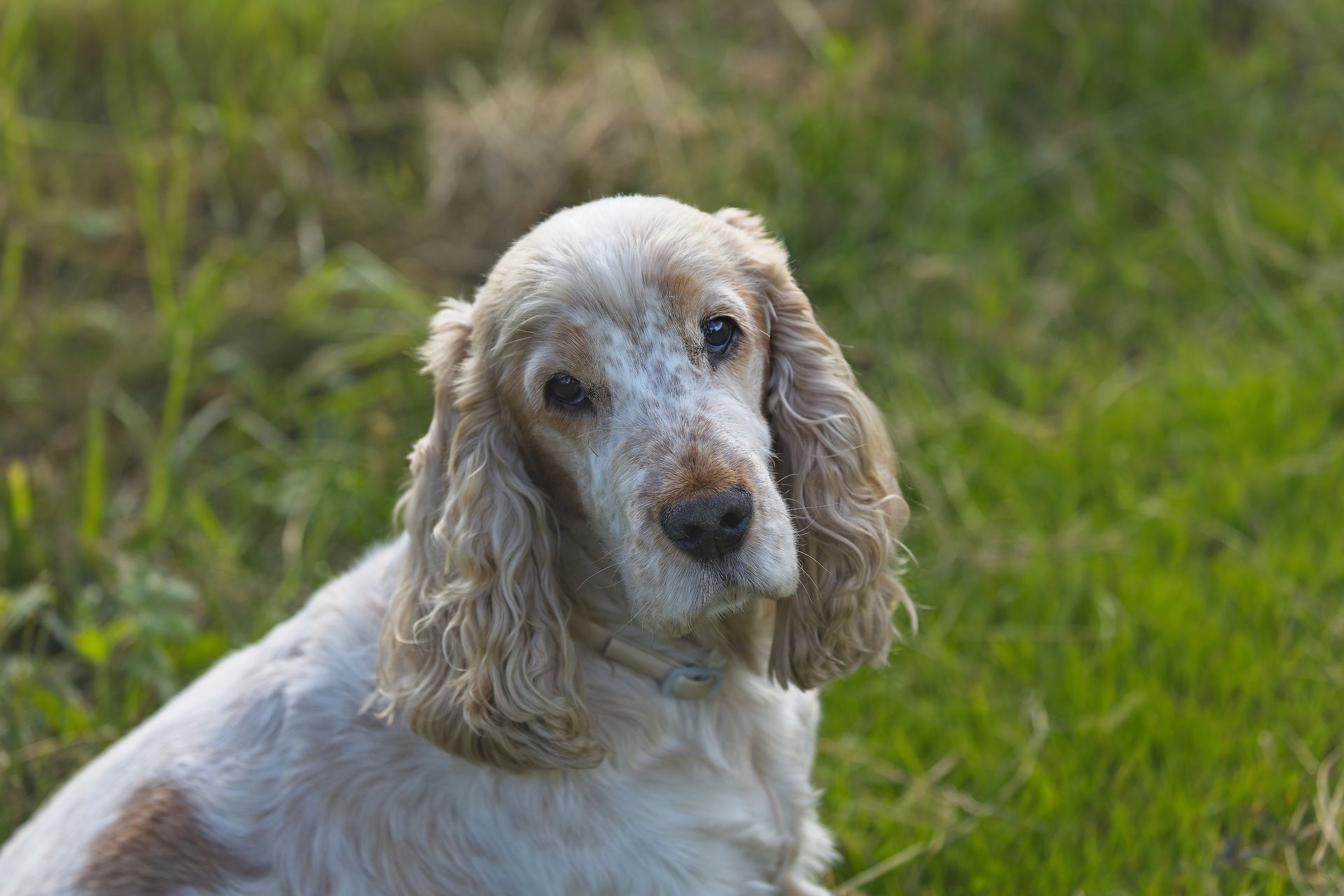
By Yasmin Porritt
•
16 Apr, 2024
If you’ve found this blog you will know by now that I’m a Canine Vet Rehabber. I want to bring together my experience with this drug, what the research is telling us and what leading experts in Veterinary Rehabilitation have to say. My opinion is just that, an opinion. I’m not here to tell you what to do, just share my thoughts on this drug to help Pet Parents make informed decisions when it comes to OA pain management. One of the most hotly debated topics in Veterinary Rehabilitation, is Librela THE answer to our pain management prayers? Is it too good to be true or do I need to stop being so cynical? What is Librela? Librela is a medicine designed to alleviate the pain associated with osteoarthritis (oa) in dogs. This solution is injected under the skin, and dosage is dependent on your dog's weight. This injection is usually administered once a month on a recurring basis. How does it work? Nerve growth factor (NGF) is a naturally occurring protein that is involved in many biological activities in the body from pain signalling to regulation of growth. Librela’s active ingredient, Bedinvetmab, is designed to bind with canine NGF and prevent communication with its receptors. In Librela’s case the aim is to interrupt pain signals, relieving the dog's sensation of pain. What is the benefit? - EFFECTIVE at relieving pain! - Vet’s don’t have to worry about treatment compliance because they are the only ones who can administer this medication. - Monthly treatments, also mean monthly checkups with your Vet on treatment progress. - Results anecdotally seen quickly, research says around a month. What are the risks? Side effects are a risk with everything we do in life, and it can be difficult to pinpoint if particular symptoms can be attributed to Librela. Usually, the demographic for dogs who are a candidate for this treatment, will also have other pathologies as well as arthritis. Some of the side effects that have been reported, - Swelling at the injection site - Systematic disorders: lack of efficacy, polydipsia, death, lethargy, anorexia - Renal and urinary tract disorders: poluria, urinary incontinence - Digestive tract disorders: diarrhoea, vomiting - Neurological disorders: ataxia, seizures Another side effect that I have seen and heard of is itching? I am yet to find any official reports of this. If your dog is on Librela or indeed any drug, any negatives should be reported to your Vet in order for them to relay this back to the manufacturer. My thoughts Librela came to the UK market in 2020 and in the USA 2023, so we are yet to understand the long-term effects of this drug. What we do have are current side effects, well the ones that have been reported. This is no way detracts from those who have suffered a devastating loss following Librela treatment, if this happened to my dog I too would be shouting from the rooftops. We need to keep listening to ALL experiences, the good and the bad. Although my listed benefits are significantly shorter than the risks involved, please don’t let this distract away from how amazing Librela is for incredibly painful dogs. Relieving a dog from osteoarthritic pain is phenomenal and it can be life-changing for certain pain management cases. What does a leading Holistic Vet have to say? Well you can blame Dr Edward Bassingthwaighte for kick starting my obsession with silent pain. He has a fabulous free lecture on this topic, which I would thoroughly recommend. Well in his write up on Librela he says, Stage four for me is when we throw the kitchen sink at the dog because we are only focused on quality of life, and keeping him going in as much comfort as possible for as long as possible. I’d include opiate drugs and Librela in this stage. I might also consider Librela in late stage 3 if all other options have been exhausted." (Bassingthwaighte, 2023) What does the ‘Godfather of Vet Rehab’ have to say? Any rehabber will know the legend Darryl Millis, I had the opportunity to speak to him but chickened out! Side note, ask for the selfie next time! Anyway, he concludes in his lengthy write-up on Librela, “My concerns are that other available treatments may be more effective, treatment of early osteoarthritis may result in reduction of joint position awareness, potentially increasing the progression of osteoarthritis, and there is the possibility of neurologic side effects.” (Millis, 2023) Is there a human equivalent to Librela? Nope, there isn't. NOAH, is a public access website containing current data sheets for licensed Veterinary medicine. They state, "In clinical trials in humans, rapidly progressive osteoarthritis has been reported in patients receiving humanised anti-NGF monoclonal antibody therapy. The incidence of these events increased with high doses and in those human patients that received long-term (more than 90 days) non-steroidal anti-inflammatory drugs (NSAIDs) concomitantly with an anti-NGF monoclonal antibody. Dogs have no reported equivalent of human rapidly progressive osteoarthritis." (NOAH, 2024) We are the same on a cellular level, a lot of human medicine crosses over into Vet medicine. Not the 'joint trashing' though... I mean I don't want to get my tin foil hat out on this one, but I have one for you too if you would like to borrow it. Conclusion In conclusion, does Librela have its place in a pain management plan? For me, it absolutely does… in certain circumstances. - All other pain medication options have been explored and suitable ones trialled. Librela shouldn’t be (IMO) the first port of call when starting a pain management journey. If and when the efficacy dips, what else do we have to fall back on? - Things that a Pet Parent can manage such as weight control, lifestyle changes and exercise should all be fine-tuned before considering It is far too easy to make bold sweeping statements of I will NEVER use Librela, I for one can’t say I will never consider it. I think in fairness we need to consider what this drug is actually doing on the front line of veterinary medicine and rehabilitation. I’ve seen dogs have the last 6 months of their life changed for the better with Librela, something we never could have achieved even with the cocktail of pain medications, physical therapy, nutrition, supplements and lifestyle management. When we’re considering quality of life, surely we want whatever time we have left for them to be comfortable? I would have to be REALLY pushed to use this with my own dogs last-chance saloon sort of scenario with end-stage OA. Anything that is referred to as a ‘wonder drug’ proceed with caution. This opinion may change, given time for more research… I doubt it but never say never. Resources https://www.ncbi.nlm.nih.gov/pmc/articles/PMC6326241/ https://www.mylamedog.com/post/what-about-librela-anti-nerve-growth-factor-antibody-treatment https://www.dogsnaturallymagazine.com/librela-berensa-wonder-drug-or-disaster-in-the-making/

By Yasmin Porritt
•
12 Apr, 2024
If you’re anything like me, you’re a canine therapist HUNGRY for knowledge! Always on the hunt for the latest CPD, striving to be the best for our canine companions. I’m a Yorkshire lass, (don’t know if you can tell) I like my tea strong and value for money! So let's take a look at my latest CPD, The Blue Paw Award. Who are VOA? VOA, the Veterinary Osteoarthritis Alliance. On their website, they state that, "The primary effor t and purpose of the Veterinary Osteoarthritis Alliance (VOA) is the creation of a platform to advance the management of osteoarthritis by developing theoretical and practical training opportunities, by providing access to the latest research, evidence and technologies and by the facilitation of a multi-professional collaboration to address and improve the results of disease management." This mission is so important to me as a Canine Paraprofessional, we all need to work together more efficiently and this is one of the first steps towards this. What is The Blue Paw Award? This award is given to those who have completed the VOA Blue Paw Award course, demonstrating that, “Members who have received the Blue Paw Award should wear their badges with pride, as they now have the sufficient knowledge to improve OA care in their veterinary practice.” Although I don’t have a veterinary practice, this course is open to Canine Paraprofessionals. What is the course content? The course is split into 8 modules, Section 1: Aetiology, Pathophysiology Section 2: Diagnostics Section 3: Pathophysiology of Pain, Pain Management, Future Therapies Section 4: Intra-Articular Injections Section 5: Nutrition & Weight Management, Nutraceuticals Section 6: Complementary Therapies Section 7: Surgery Section 8: Monitoring Each module has further sections, lots of reading and video demonstrations to watch. How are you assessed? The assessment takes place via the online portal, a multiple-choice quiz of 45 questions from the course content. You can only access this once you have completed all your previous modules. What is the investment? The investment amount for this course is £50 for individuals via an annual membership. For practice memberships for up to 5 members, the investment is £250 annually. Was the CPD value for money? 100%, I would have happily paid much more for this CPD! What were my favourite parts? It was great to refresh and deepen my understanding of the pathophysiology of OA and Pain. I enjoyed the section on X-ray interpretation, although I’m not a Vet I do see a lot of X-rays and this knowledge can help explain a diagnosis to a Pet Parent. The thorough breakdown of different pharmaceuticals was very insightful, not that I do any prescribing but can help with Pet Parents' understanding of why their dog has been prescribed a particular drug. Throughout this course there are plenty of research references, these not only support the content but are a valuable resource for further learning. Where could there be improvements? At the end of this course, there is space for you to submit feedback, as I imagine this course will continue to evolve its content. - One section contains video footage of a cadaver dog. Although their face is covered, for those of the industry who aren't accustomed to seeing this a little note to say ‘This next module contains a cadaver’ would have just made it a touch more user-friendly. - It would be nice to contain a section on the emotional aspect of OA management, for both the dog and caregiver. Plus a video on how to get the most out of an OA exam through cooperative care. Again this could just be me but another component I feel is important in OA management. - The nutrition section could be more thorough, although it was nice for the content to remain impartial to food type and discuss on a calorie basis. We all know how political it can get talking about feeding dogs! Maybe this is just me but I’m obsessed with the relationship between the microbiome, nutrition and pain. I did mention this in my feedback. These three points are only small personal drawbacks, but the actual content of this course outweighs these points. Where can I sign up? All of this information can be found on the VOA Website . All in all, I enjoyed how thorough this course was, the layout and learning platform is super user-friendly and you get to study at your own pace. This is just module 1 and I’m hoping this is followed up with module 2! An absolute must for anyone working in Vet Rehab. References - https://vet-oa.com/blue-paw/

By Yasmin Porritt
•
26 Mar, 2024
I have an extensive book collection on a huge range of subjects, but of course mainly all about dogs. It’s not uncommon for my in clinic customers to be sent home with a book to read! Here are some of my favourites, keep checking back regularly as I will keep updating this list! Anatomy & Behaviour - The Wild Canids: Their Systematics, Behavioural Ecology and Evolution. Michael W Fox - Dog Anatomy: A Pictorial Approach to Canine Structure. Peter Goody - The Dog Anatomy Workbook: A Guide to the Canine Body A Gardiner & M Raynor - Dog Anatomy: A Coloring Atlas. Robert Kainer and Thomas McCracken - Dogs in Motion. Professor Martin Fischer - The Book Your Dog Wishes You Would Read. Louise Glazebrook - The Body Keeps The Score: Brain, Mind, and Body in the Healing of Trauma. Bessel Van Der Kolk Nutrition & Herbal Health - Food Pets Die For, Shocking Facts about Pet Food. Ann Martin - Honey’s Natural Feeding Handbook for Dogs. Jonathan Self - Feeding Dogs: The Science Behind the Dry Versus Raw Debate. Dr Conor Brady - Raw Meaty Bones: Promote Health. Dr Tom Lonsdale - Multi-Billion-Dollar Pet Food Fraud: Hiding in Plain Sight. Dr Tom Lonsdale - Yin & Yang Nutrition for Dogs: Maximizing Health with Whole Foods, Not Drugs. Dr Judy Morgan - Herbs for Pets: The Natural Way to Enhance Your Pet's Life. M Wulff & G Tilford - Animal Self-Medication: How Animals Heal Themselves. Caroline Ingraham Canine Health - The Complete Book of Cat and Dog Health. Lise Hansen - The Forever Dog. Rodney Habib and Karen Becker - Your Dog’s Pain Diary, A Blueprint For Monitoring a Pain Trial. Yaz Porritt
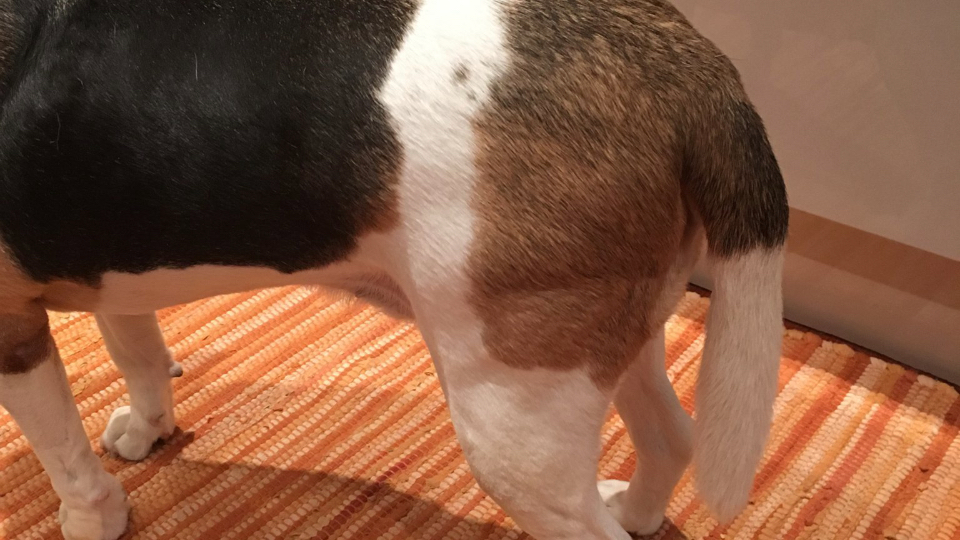
By Yasmin Porritt
•
25 Feb, 2024
Technically known as Acute Caudal Myopathy, this condition goes by many names… - Swimmers Tail - Limber Tail - Frozen Tail All mean the same thing, a funky looking tail! What is Swimmers Tail? Swimmers tails can be characterised by the sudden onset of a limp and painful tail. This can occur at the very base or further along the length of the tail. It can prevent your dog from holding their tail carriage high, sitting and or wagging comfortably. There are some schools of thought that believe a sudden onset of blood vessel constriction caused by cold water. This may be the case but doesn’t totally explain all of the instances Swimmers Tail that can occur. What causes Swimmers Tail? There are no straightforward answers to what can cause a flare up but here are some scenarios that I have come across which may cause an episode of Swimmers Tail. - Walking in heavy rain with no coat - Swimming in cold water - Swimming for too long - Washing in cold water - Wagging their tail too much - Excess time in a crate - Excessive exercise in an unfit dog What breeds are prone to Swimmers Tail? We don’t yet understand exactly why certain breeds are more commonly affected by Swimmers Tail, but it is more commonly seen in hunting breeds such as, - Beagles - Spaniels - Labradors - Pointers - Vizlas
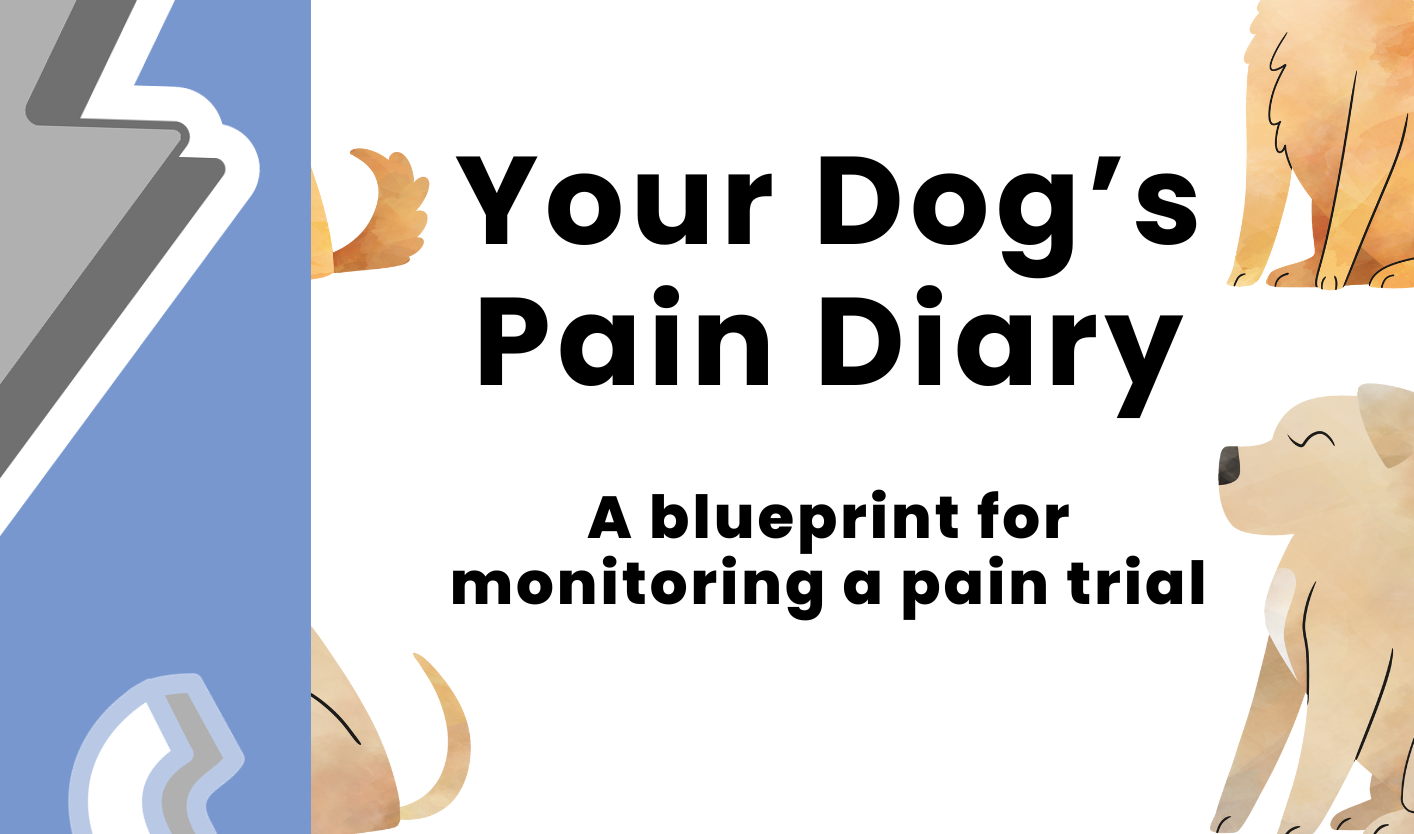
By Yasmin Porritt
•
11 Jan, 2024
Months in the making, well years in fact when I look back to when I first became totally obsessed with pain management! 95% of the dogs I work with come to see me for pain management reasons, so I wanted to make something that can become part of the team. Being diagnosed with a chronic condition doesn't mean your dog's life has to come to a standstill, there is SO much we can be doing to support them. What does a chronic condition mean? This can be broadly defined as a condition that requires ongoing treatment and management. Specifically this can be attributed to conditions in our dogs such as, - Hip Dysplasia - Elbow Dysplasia - Luxating Patella - Cruciate Disease - Osteoarthritis - Intervertebral Disc Disease (IVDD) When managing a chronic condition, we are managing chronic pain. Even when your dog has corrective surgery, this is just the beginning of a new journey and will still need management long term to protect the results of the surgery. How can Your Dog’s Pain Diary help? When I wrote this book I thought of common situations where I have asked Pet Parents to keep a log of what was going on with their dog. - A recent diagnosis - Post operative recovery - Starting a new therapeutic intervention - Starting a new pain medication - Following a change in pain medication dosage Each of these instances and many more can impact a pain management plan. I have structured this book to help create a blueprint that you can keep referring back to as a point of reference. What does Your Dog’s Pain Diary include? - How to make the most of your Vet appointments - Basic anatomy and Veterinary terminology - Types of pain - Building a team around your dog - 6 week diary And much more! Peppered with extra things to help you along the way, plus a whole heap of Pet Parent empowerment. I’m a big believer that the more pain knowledge we can absorb, we can then make informed decisions about our dogs pain management. If you’re ready to, BE YOUR DOG’S CHAMPION This book is for you! Don't forget my free eBook Ooh That's The Spot which also has lots of information to support you and your dog.
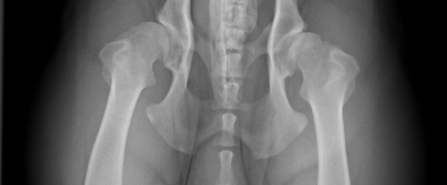
By Yasmin Porritt
•
07 Jan, 2024
WHAT IS CANINE HIP DYSPLASIA? Canine Hip Dysplasia can be recognised as an umbrella term, where there is disruption in the ball and socket joint that attaches the hind limbs to the pelvis. It is one of the most common orthopaedic conditions that our dogs suffer from. Treatment options vary from lifelong conservative management to surgical intervention and post-operative care. Depending on the severity of the hip dysplasia and how well pain is managed will determine what type of treatment plan will be best for your dog. WHAT ARE THE SIGNS OF CANINE HIP DYSPLASIA? Diagnosis can only be obtained through your Veterinary Surgeon, who will use a multimodal assessment to evaluate the health of your dog’s hips. Along with palpation, and diagnostic imaging, there are certain signs that you may spot. - Exaggerated sway in the hips when walking - Stiffness after exercise or first thing in a morning - Struggling to stand from a sit and or down position - ‘Bunny Hop’ gait when running - Reluctance to exercise This list isn’t exhaustive but gives you a starting point for things to look out for with your dog. BREEDS PRONE TO CANINE HIP DYSPLASIA Hip dysplasia is a genetic condition, meaning some breeds are more prone than others. According to the UK Kennel Club, the breeds most affected are - Bernese Mountain Dog - German Shepard - Golden Retriever - Labrador Retriever - Newfoundland - Rottweiler Hip dysplasia can occur in any dog, anecdotally I have seen this frequently in French Bulldogs and Spaniels. Depending on how many Kennel Club breeders are health screening their dams and studs, will influence the statistics the Kennel Club can provide. MANAGING CANINE HIP DYSPLASIA Building a team of people around your dog is key to managing any orthopaedic condition, I discuss this further in my teamwork blog . With this team, our collective goal is to manage pain effectively and maintain a good quality of life. I’m biased so Massage is a given but in addition to this my top 3 interventions, - Hydrotherapy - Chiropractor - Physiotherapist Remember when choosing your Therapist that we should be booking with suitably qualified professionals, I explain this further in my Value of Paper blog. Other factors to consider would be nutrition, weight management and analgesics prescribed by your Vet. WANT TO KNOW MORE? This blog is just a quick run-through of things to consider if your dog has or is in the process of being diagnosed with Canine Hip Dysplasia. If you’re looking to take a deeper dive into understanding Canine Hip Dysplasia, from anatomy, to understanding BVA scoring and research around influential factors, check out my online training Your Dogs Hips Don’t Lie . STARTING YOUR PAIN MANAGEMENT JOURNEY? If your dog has recently been diagnosed with Canine Hip Dysplasia, along with diagnostics you may also consider a pain trial. Pain trials involve tracking your dog's progress on a particular prescribed medication, but how can we monitor this objectively? This is why I created my book, YOUR DOG'S PAIN DIARY, A BLUEPRINT FOR MONITORING A PAIN TRIAL Packed to the brim with information, with a sprinkle of anatomy, a dash of goal setting and a whole heap of Pet Parent empowerment *Please note this link will take you to my sister company website Instinctive Animal Wellness*

By Yasmin Porritt
•
14 Nov, 2023
This service is the whole kit and kaboodle, looking at EVERYTHING to do with your dog. Taking lots of separate pieces of the puzzle to understand the whole picture is key to getting the most out of this service. Here are some of the topics we will cover, MEDICAL HISTORY Combined with your New Customer Form, obtaining your dog's medical history from your Vet is a useful component of this service. This allows me to review reasons for Vet visits, and find recurring issues along with surgical history. CURRENT TREATMENT What therapies has your dog had? We will delve into what has worked for your dog and help you find a local qualified therapist such as a hydrotherapist, physiotherapist etc. We will also discuss current analgesics and how to successfully monitor a pain trial. (Note only your Vet can adjust dosages and prescribe medication) GAIT ANALYSIS Reviewing submitted footage I will asses your dog's posture, gait and biomechanics. This is a key component of understanding how your dog is managing their current pain levels. EMOTIONAL This is a huge influencing factor in how your dog can experience pain. What happened in your dog's early years, and how does their breed impact how they present pain? What are the household dynamics, and how are these influencing overall stress levels? NUTRITION Having trained extensively in Canine Nutrition and TCM Food Energetics, your dog's diet is one of the cornerstones of joint health. We will discuss the current diet, dietary restrictions and overall gut health to find obtainable goals, whether that be raw, cooked or simply adding in some fresh. I’m super picky when it comes to supplements, I want to make sure you’re getting enough bang for your buck. This includes helping you understand the components of supplements that will work best for your dog. LIFESTYLE I’m super nosey but with good reason! What is the flooring in your house? What is your dog's quality of sleep like? What does their exercise look like, are we walking for miles or barely making it down the street? PAIN I’m a big believer in knowledge is power and I love to empower Pet Parents. We will go through the mechanics of pain, types of pain and how to recognise potential pain in your dog. I will then take all of this information and compile your report, the blueprint for your dog's treatment plan. This service works best for dogs that already have a diagnosis and are looking to fine-tune your current pain management plan. Checklist for your Online MOT - New Customer Form - Medical History - Gait Analysis Footage How do I submit Gait Analysis footage? There are two options depending on how tech-savvy you are. 1- Create a folder on Google Drive to pop all your footage in and share it with yorkshire.pooches@gmail.com 2- Send your footage over via WhatsApp, 07988634199 Please state your name and your dog's name when submitting footage. What footage do I need to submit? This is the most important bit, and I’m fussy but with good reason I promise! Footage needs to be filmed on a surface with traction, try to avoid laminate or tiled floors as sliding paws can throw me off. If your dog refuses to do any of the required footage, film the refusal but don’t force your dog to do anything. - Walking & trotting left to right - Walking & trotting right to left - Walking towards the camera - Walking away from the camera - Sit to stand/ down (side on footage both left & right) - Stand to sit / down (side on footage both left & right) - Down to sit/ stand (side on footage both left & right) Filming in landscape is preferable. Check out Yorkshire Pooches Therapies Gait Analysis Library for some examples of what I’m looking for. Ready to level up your dog's treatment plan? Book in here , please allow 14WD preparation time for this appointment type. The video link for your appointment will be sent on the morning of your chosen date. Any questions, just give me a shout! Love Yaz, Lily, Rodney & Peggy x
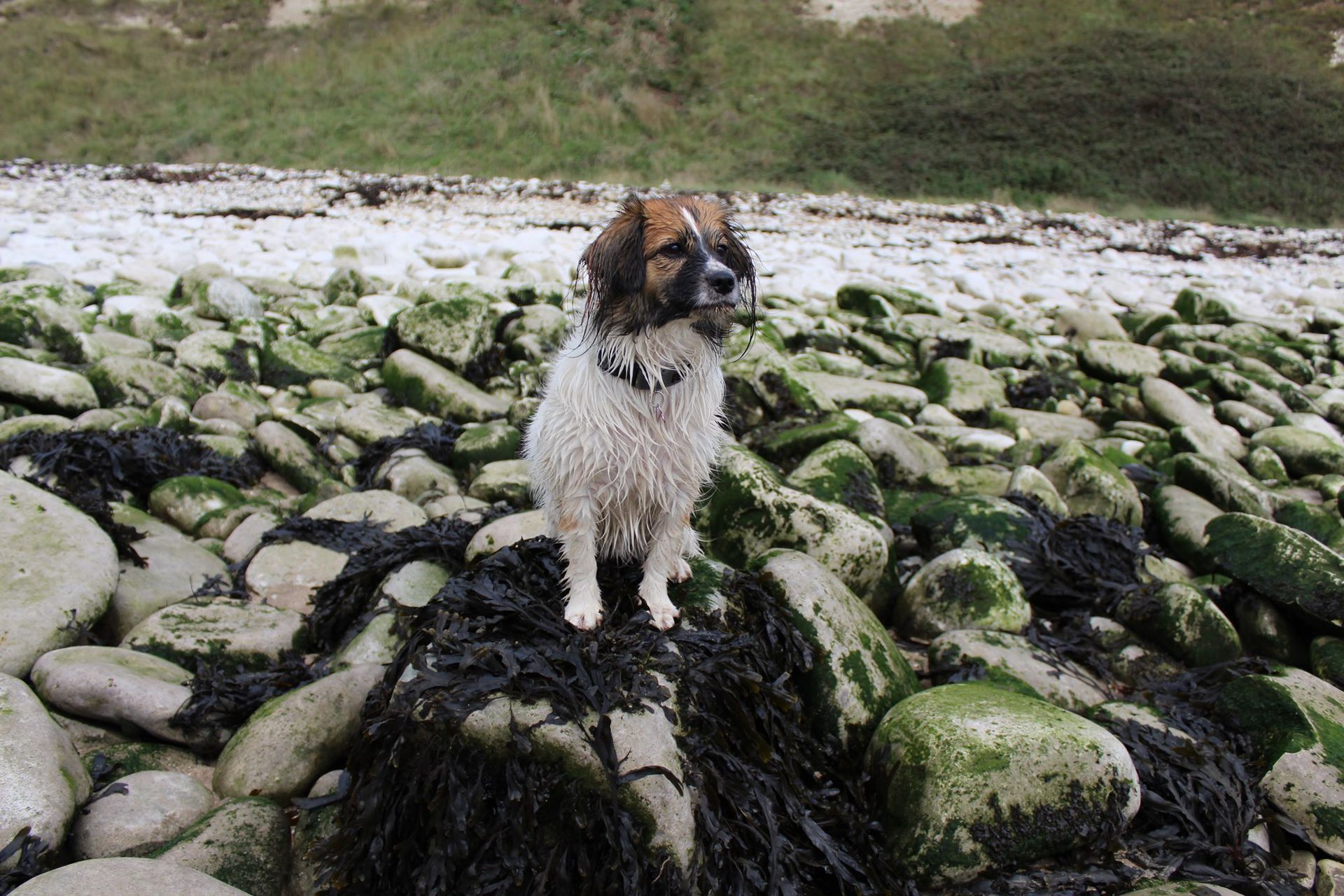
By Yasmin Porritt
•
01 Nov, 2023
Online services are something that continues to grow in popularity at Yorkshire Pooches Therapies. I have been lucky enough to work with pet parents across the globe, the most popular service is our Online Gait Analysis. What is an Online Gait Analysis? This involves me reviewing submitted footage to assess gait patterns, posture and biomechanics. Who is an Online Gait Analysis for? For many dogs who struggle with reactivity and hyperarousal, a trip out to Yorkshire Pooches Therapies or the Vets may prove too much for them. Plus it can be difficult to observe a true reflection of how a dog is moving if they’re stressed or distracted. An Online Gait Analysis Report can be used to start conversations with your Vet about areas of concern. In the UK we can take for granted the amount of animal therapists that we have at our disposal, sadly this isn’t the case in other countries. An Online Gait Analysis Report is a way to have input from overseas, again to facilitate conversations with your dog's Vet. How do I submit footage? When you purchase your gait analysis there is the option for you to upload your video footage. Videos must be under 100 MB, this can be achieved by ensuring clips are under 30 seconds in length. Multiple videos can be uploaded, should you need to send extra footage this can be sent via WhatsApp to 07988634199, stating both your name and your dog. What footage do I need to submit? This is the most important bit, and I’m fussy but with good reason I promise! Footage needs to be filmed on a surface with traction, try to avoid laminate or tiled floors as sliding paws can throw me off. If your dog refuses to do any of the required footage, film the refusal but don’t force your dog to do anything. - Walking & trotting left to right - Walking & trotting right to left - Walking towards the camera - Walking away from the camera - Sit to stand/ down (side on footage both left & right) - Stand to sit / down (side on footage both left & right) - Down to sit/ stand (side on footage both left & right) Filming in landscape is preferable. Check out Yorkshire Pooches Therapies Gait Analysis Library for some examples of what I’m looking for. Which service do I pick? To make sure there is something for everyone I have created a buffet of online services. Depending if you have time restrictions (upcoming Vet appointment) will determine if you need a standard service or an express service. Standard Online Gait Analysis- £85 - 14WD turnaround - Written report includes general overview and recommendations - Guide to Understanding Your Dogs Online Gait Analysis Express Online Gait Analysis- £150 - 4WD turnaround - Written report includes general overview and recommendations - Guide to Understanding Your Dogs Online Gait Analysis Standard Full Online Gait Analysis- £200 - 14WD turnaround - Edited video listed on YouTube of submitted footage - Written report includes specific footage assessment and recommendations - Guide to Understanding Your Dogs Online Gait Analysis Express Full Online Gait Analysis- £350 - 4WD turnaround - Edited video listed on YouTube of submitted footage - Written report includes specific footage assessment and recommendations - Guide to Understanding Your Dogs Online Gait Analysis What is the difference between an Online Gait Analysis and a Full Online Gait Analysis Depending on how much detail you're looking for will determine which service to pick. Online Gait Analysis is an overview of what I can see in the submitted footage, including my recommendations. The Full Online Gait Analysis includes an edited video and your report goes through each clip, listing what I can see plus recommendations. Both come with a guide to understanding your dog's gait analysis, straight forward translations for the terminology used. Online Gait Analysis Checklist - Complete a New Customer Form - Submit your footage when purchasing and if necessary additional clips via WhatsApp at 07988634199. Once all of this is done I can get cracking and your report will land in your email inbox. Any questions, just give me a shout! Love Yaz, Lily, Rodney & Peggy x
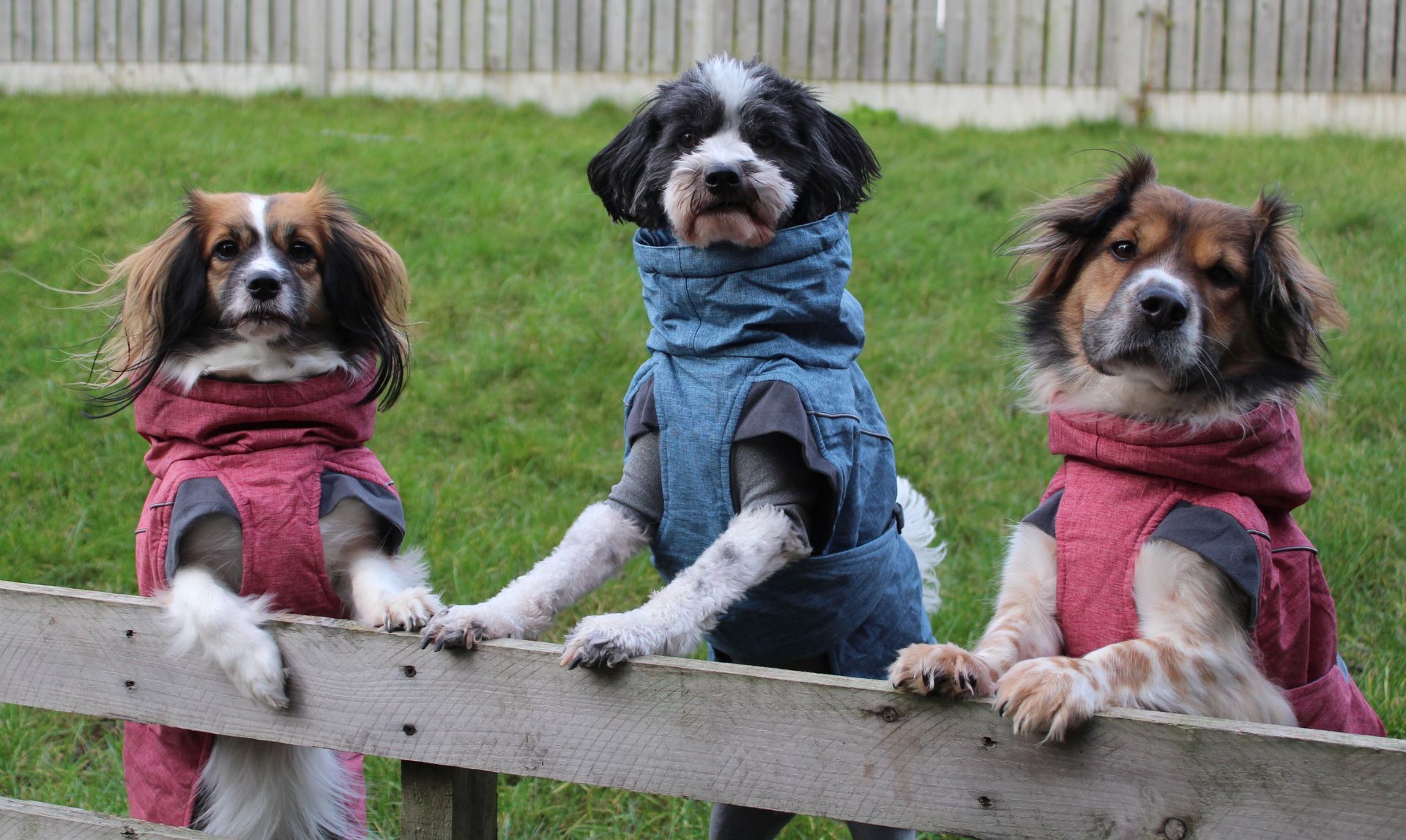
By Yasmin Porritt
•
21 Aug, 2023
So you want to bring your dog for regular treatment at Yorkshire Pooches Therapies, we can't wait to see you! Before we get started there are a couple of bits of paperwork you need to complete. - New Customer Form , this is for you to complete and tell me all about your dog. - V et Consent Form , this is for your Vet to complete, in line with the Veterinary Surgeons Act 1966. Once I have all of this paperwork completed you can go ahead and book in for your initial session! Through our online booking system, you can choose a date and time that best suits you with instant appointment confirmation. Payment won't leave your account until the day of your appointment. - Initial Assessment Booking Link This initial assessment is a little longer than usual appointments, to allow your dog the opportunity to have a good sniff around clinic whilst we discuss medical history, goals of treatment etc. This includes in-person gait analysis, LED therapy and hands-on work if the dog allows. A good way to prepare for this first session is to bring plenty of small treats to build up that positive association and provide some distraction around palpation. Yorkshire Pooches Therapies provides consent-based treatment, which helps build trust between myself and the dog. These first sessions tend to go nice and slowly to allow dogs time to settle in. If your dog is too stressed to be palpated I will start with desensitising tasks for you to practice with your dog to build up confidence around handling. Every dog is an individual, sometimes in an initial session we get quite a bit done, and others need a couple of sessions before fully relaxing into it. Upon completion of this initial assessment, you can book in for regular massage sessions. The frequency of sessions varies from dog to dog, but this is something we can discuss as part of a treatment plan. For a dog to stay on Yorkshire Pooches Therapies books I will need to see them a minimum of once every 6 months. If your sessions fall outside of this time frame you will have to obtain Vet Consent again. Any questions give me a shout, Love Yaz, Lily, Rodney & Peggy x
✓ DBS Checked
✓ Fully Insured
Yorkshire Pooches Therapies
Suite 4, Premium Inn,
Altofts Lane, Whitwood
WF10 5PZ
Website designed & built by www.webphizix.co.uk


